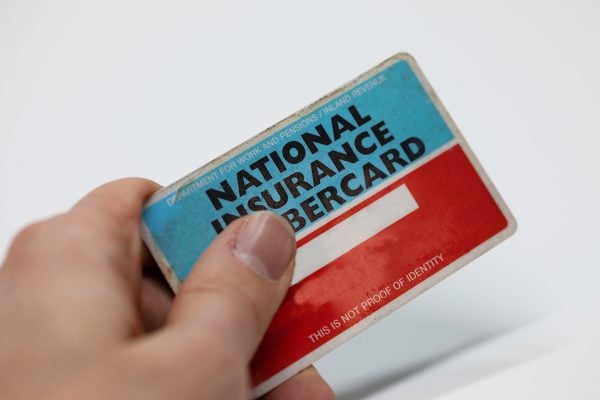If you are VAT registered, then there is less than a year to go before the Government’s Making Tax Digital for VAT program impinges upon your life and you’re required to submit VAT records electronically via a digital form.
The massive problem with Making Tax Digital
The main issue that this imposes on many small businesses is that they don’t already keep financial records in a suitable software solution. There’s a good reason for this – they’re all bloody complicated. I’ve not seen a single accounting program ever that I could understand as well as the default go to accounting solution for many small businesses which is a simple spreadsheet program.
Just about any platform you sell on (or perhaps more likely any payment provider you use) will give the ability to download your financials in CSV format which can quickly be cut and pasted into a master spreadsheet of your sales. Another sheet can be used for your purchases and expenses and for many that’s their accounts done, especially if they are on the Flat Rate VAT scheme which makes submitting your VAT return as simple as totting up your total sales and sending a fixed percentage of the total to HM Revenue and Customs.
Is free software any good?
Small businesses who are VAT registered will now have to obtain some paid for or perhaps free software to do their accounts. HM Revenue and Customs think that many small businesses will be able to use free software but if you’re thinking that’s the way to go you may have an unpleasant surprise in store. Free accounting software wasn’t designed for online retailers with thousands of transactions and many of the free to use solutions have a very restrictive number of ledger entries available before you have to pay, for instance QuickFile is only free for up to 1,000 entries. 1,000 sales is small in terms of just about any online retailer who has had to register for VAT.
That brings us to the paid solutions and again they’re not perfect – you’ll want to select an accounts service that makes importing your sales quick and easy so that mean marketplace and payment provider connectors. These connectors may also come at an additional cost or be provided by a third party provide who again charges for their services. It’s not much good if it works for the majority of the platforms you use if it’s missing one or two connectors. Services such as Quickbooks, Sage and Xero might be worth exploring but they come a cost and even the simplest version are relatively complex for a novice accountant.
Is it worth getting a bookkeeper or accountant?
One consideration you may opt for is simply to dump the problem onto a third party accounts professional in the shape of a bookkeeper or accountant. Again there is a cost but the time savings for some could make this worthwhile.
Will accounts software help you run your business?
Accounts software should in theory be a benefit as you’ll have an always up to date overview of your businesses financials. However the problem that many will run into is that they simply won’t know how to use the accounts software to best advantage. Often you’ll need to set up reports to generate the information you want and it can be complex to set up accounts programs for different use cases – for instance they’ll all handle standard VAT, but getting them to work with Flat Rate VAT is an edge case and so often needs specific configuration. If you’re on a scheme like the Margin Scheme then configuring your accounts program will be even more complex.
What should you be doing now to prepare for Making Tax Digital for VAT?
You shouldn’t be stalling and throwing this problem into the long grass because Making Tax Digital for VAT comes into effect from the 1st of April 2019. From this date you will be required to:
- Keep your records digitally (for VAT purposes only), and
- Provide your VAT return information to HM Revenue and Customs through Making Tax Digital functional compatible software
There is of course a paradox with the first requirement – it’s pretty hard to keep your VAT records digitally without keeping all of your accounts in a digital format.
If you are to comply with Making Tax Digital for VAT from April next year, you will likely want to run your chosen accounting software solution in parallel with your normal accounts solution for at least a quarter so that you can be confident that it reflects your business. Bear in mind that HM Revenue and Customs will also be receiving supplemental data over and above the normal ‘9 box’ VAT return information – because HM Revenue and Customs receives no information about how the figures in the return are arrived at, it is difficult for HMRC to target its ‘downstream’ compliance activity at customers most likely to be non-compliant. This will change so you really do want to ensure that your new VAT software is performing as it should.
It is unlikely that you want to implement a new solution in Q4 as it’s the busiest time of the retail calendar. If you want to run a new accounting solution alongside your existing record keeping then now is the time to start exploring your options. Give yourself time to learn how the software works and ensure you can get the reports that you need long before you are required to use it to submit your first tax return of the 2019-2020 financial year.










8 Responses
Holy Kebabs,
I have been trying to get Paypal Multi currency to import properly for the last 3 hours, into Xero.
I use spreadsheets usually and thought I would try Xero at the reccomendation of my accountant. If it’s all this hit and miss and problematic, then God help me.
In accountancy circles, I have seen this programme frequently called “Making Tax Diabolical”
HMRC really don’t know what they are doing, haven’t made clear to software providers how each step will integrate with the next, and I have seen no evidence of any concessions to those businesses in rural areas with poor (or no) internet, or business owners with disabilities (e.g. the partially sighted).
Rumour is that this is the first step in working towards deducting tax as the revenue is earned rather than after calculation of an accurate tax return. The first word to describe it is “Cluster”, I’ll let you pick your own second word……
I use BrightPay, free for up to 2 employees. Not had any of the problems that you’ve mentioned so far (touches wood). Do all my RTI’s, Payroll, End of Year etc…
I managed to get Xero to connect to Payapl and import currencies.
All that is except GBP !
I emailed support and they blamed it on having too many transactions.
We are not big by any stretch of the imagination.
Their solution was
===
You’ll need to stop the feed and reactivate it using today’s date.
You can then manually import any missing transactions.
===
It’s almost like the software is in the dark ages.
If I then import the csv manually, I will have to rearrange the columns to fit their template of 5 columns.
A few less than paypal’s export csv!
I am sure the software works for a lot of people and maybe it’s just me but as I look further into this, I don’t see an easy ride.
We at Liquid will release a free VAT MTD filing tool in September that will work with your existing spreadsheet – you map the fields once using a simple tool, which the software remembers for the next time.
It will then file directly to HMRC’s new VAT MTD portal which we expect will go online from September also.
More information here – https://vat.liquidaccounts.com/
Liquid Accounts is our cloud accounting package and VAT MTD is included at no extra cost, plus it has better CSV import capability than appears to be the case elsewhere in this comments string.
After a terrible week of support with Xero, trying to ascertain as to how to obtain more information from their Paypal feed, I finally find out….. You cant.
Our accountant set up rules from the poor amount of feed information recognising the @ symbol and a credit as a sale.
I need to know what country the sale was from so that I can sort my vat return and separate out sales outside of EU.
You can’t do things like that, it appears. No address information or product information at all, arrives in Xero.
Their alternative was to….. wait for it…..
Do a manual import.
It’s no wonder their paypal module has such a low score.
I’d love to hear if anyone else uses Xero and makes it work with ebay – amazon etc.
I don’t want to fork out the 30$ extra a month for the amazon module, so I have to do that as a manual import with some adaptation, but please don’t advertise the Paypal module when it really doesn’t appear to be fit for purpose.